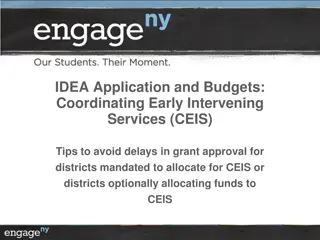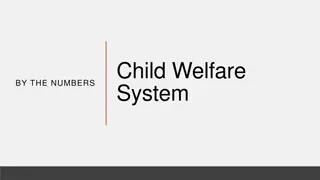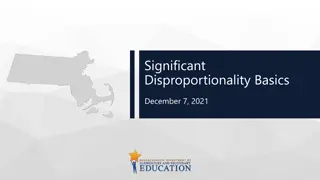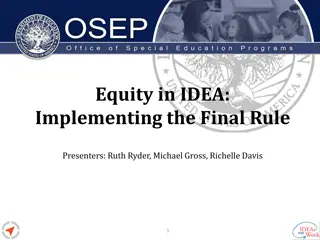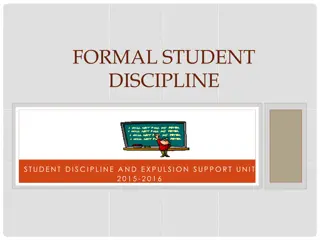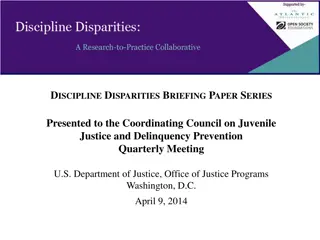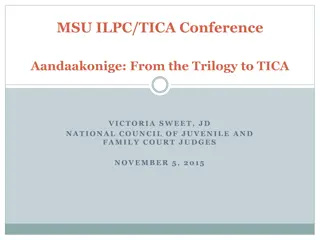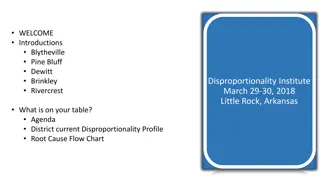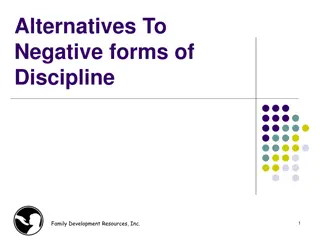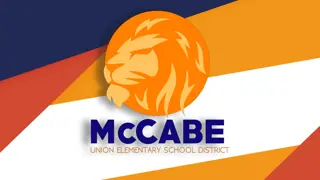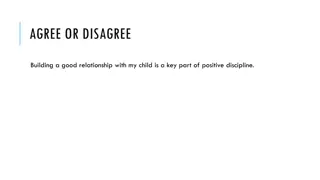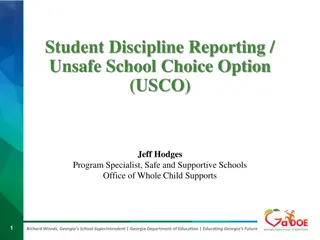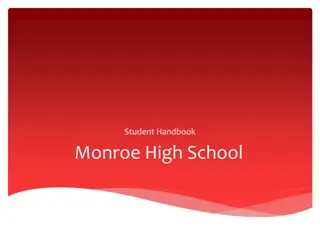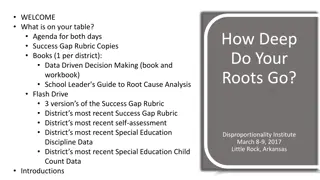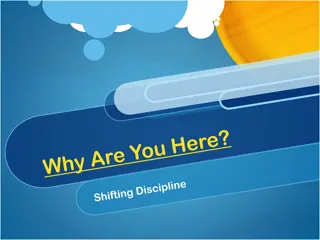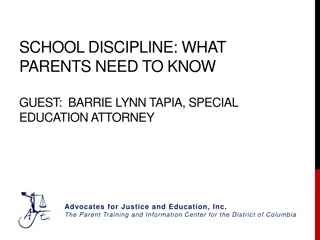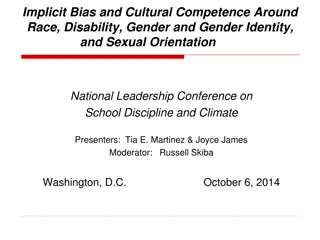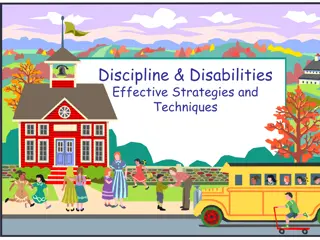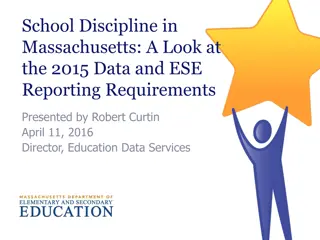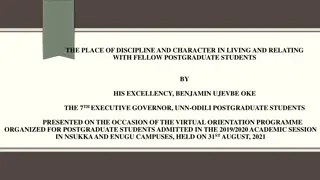Addressing Disproportionality in School Discipline
Aiming to reduce disparities in disciplinary actions, this initiative highlights the need for culturally responsive practices and real-time interventions for student growth and behavioral change. With a focus on best practices and equity, the project seeks to enhance knowledge and promote inclusive disciplinary approaches within school settings.
Download Presentation

Please find below an Image/Link to download the presentation.
The content on the website is provided AS IS for your information and personal use only. It may not be sold, licensed, or shared on other websites without obtaining consent from the author.If you encounter any issues during the download, it is possible that the publisher has removed the file from their server.
You are allowed to download the files provided on this website for personal or commercial use, subject to the condition that they are used lawfully. All files are the property of their respective owners.
The content on the website is provided AS IS for your information and personal use only. It may not be sold, licensed, or shared on other websites without obtaining consent from the author.
E N D
Presentation Transcript
DISCIPLINE- SUBCOMMITTEE MEMBERS Kimberly Atkinson Pamela Brown Ellen Goldman Duffy Maisha Gillins Laticia Hicks Felicia Patterson Fred Plitt
DISCIPLINE To eliminate disproportionality in discipline (referrals, suspensions and expulsions)
WHAT? The following themes emerged for the AACPS discipline data: A significant disparity among AACPS African American students regarding K-12 disciplinary policies, practices, procedures, and protocols Best practices concerning current K-12 discipline models, systems, and innovations Culturally Responsive Pedagogy Training - an instructional in-service designed to improve the knowledge-base [ethnicity, culture, race, and equity] of all K-12 stakeholders [teacher, staff, and caregivers] concerning the current AACPS student population
WHY There may be a lack of knowledge regarding current K-12 models, practices, and strategies of K-12 discipline in the 21stCentury school building. The need for real time and humane discipline interventions that provide student growth and personal behavioral change.
NOW WHAT? Significant information is available already both through AACPS and other districts AACPS has a clearly outlined discipline process Further exploration of the use of restorative justice Individuals/experts at each school (or assigned a few schools) who focus solely on diversity, equity, and inclusion and disparity
NOW WHAT? SROs receive extensive training in restorative practices, implicit bias, support services, etc.; we would suggest a similar model extended at the school for others involved in the discipline process Additional training for example when making a referral what constitutes a discipline issue or criminal concern. Share data that the SROs have regarding the rate and number of incidents, as well as charges Data disaggregated by race and ethnicity, categorization of offenses Learn more about how the code is administered i.e. what is the strategy, what happens systematically? Consideration of best practices in K-12 discipline administration
WE WANT TO HEAR FROM YOU! - Each participant received two talking chips - Participants have 2 opportunities to respond to: Overall reactions and immediate questions New ideas Ideas that enhance the goal as written - If participants have more then 2 things to share, write any ideas or feedback using the sticky notes provided


